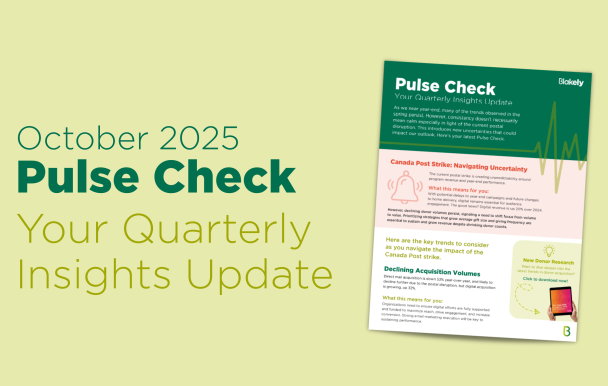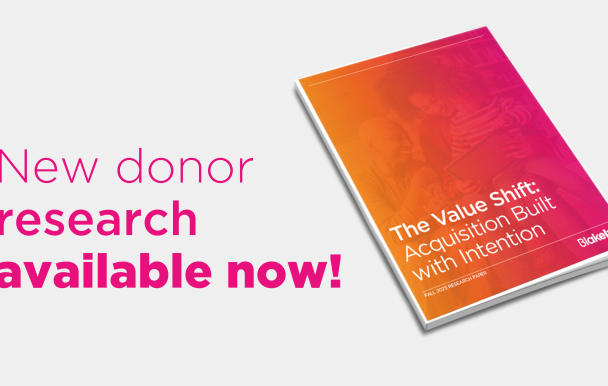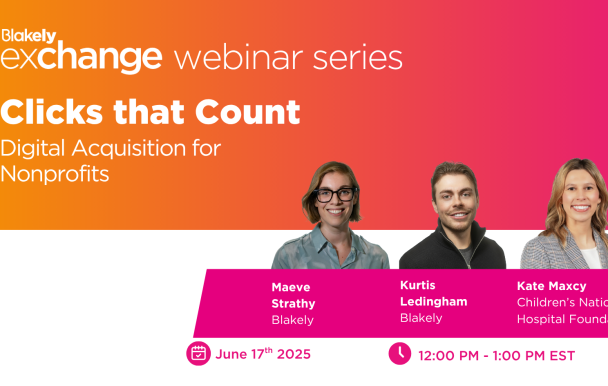7 ESSENTIALS FOR INTEGRATION
You know it, we know it. Digital is the fastest-growing channel for revenue growth. The global pandemic, and its disruption of traditional (offline) channels, has accelerated the already growing trend in digital transacting (consumer purchases and donor giving). What this means is that, now, if you aren’t digital-first — with fundraising that is fully integrated, founded in insights, and digitally-led — someone else is, and they’re connecting with your donors.
So, with this in mind, here are 7 more essentials to help you get your fundraising integrated and help your charitable organization stay competitive.
1. Start with insights
This is how we approach every campaign, but it’s arguably most critical when you’re bringing integration into your campaigns. What happened the last time you ran a campaign like this? What did you learn? What worked? What didn’t? What did you test (and what won)? Who responded best? What channels had the most conversions (and the greatest level of engagement)? How critical were other channels in supporting awareness? Ask yourself lots of questions like these, and it will help you build the strongest strategy for your next campaign — and your overall outreach strategy.
2. Mix things up!
Variety in communication type and ask approach is essential to success – but here we’re talking about the channel mix. Most organizations can’t afford to be on all channels at once (and, truth be told, not all channels are right for all types of outreach), so which ones are you going to communicate your message on? Answering some of the questions above will help guide you – you should always be in Search, but what’s your next best channel for conversions? Do you need an additional ad type to help build and drive awareness? Give all this some thought so your integrated campaign is live on the strongest channels for you.
3. Timing
How long are you going to be in market, and what’s your cadence of communication? When and where you’re communicating with donors/prospects matters over the course of an integrated campaign. We know that, now, your campaigns need to be led by your online (and most responsive) channels and supported by offline touchpoints (like direct mail). Does this mean you want to launch paid digital media in advance of a direct mail piece dropping? If you’re targeting email addresses on Facebook, are you also emailing those individuals? You need to think about the media investment and how they align with other touchpoints throughout the campaign journey. If you get the timing right, you can see a major lift in campaign performance.
4. Content is Queen
What are you going to say? It’s not enough just to be “out there” (though that’s a good start), you need to have something compelling to say. Do you have an emotional beneficiary story that will connect with donors/prospects? Is there a new program/innovation/project that you want to tell people about that will inspire them to give? There’s a lot of competition out there, so you need to consider the strength of your story, and how you might tell it across integrated touchpoints and channels.
5. Video
We know by now that video plays a powerful role in successful campaigns. Video is frequently the content that is most engaging to consumers (a.k.a. donors), so if we want to inspire people to connect with our cause, video is an incredibly effective way in. A lot of the time, how you shoot it (high production vs. iPhone) depends on your budget — but a low budget shouldn’t stop you from using video in your fundraising. Raw video can be very impactful, as long as it tells an authentic story.
6. New and Improved
What’s probably most daunting about integration to a lot of organizations is the fact that it’s constantly evolving. But that’s also what makes it so amazing! Every few months, there’s a new way to utilize digital media – whether it’s YouTube’s video builder beta (kind of like responsive ads for YouTube) or Facebook’s lead ads, there’s always something innovative that could drive stronger performance for your integrated fundraising campaigns. Find out what’s innovative in integration, and then test-it! Truly, the worst-case scenario is that you’ll gain valuable learnings for your next outreach.
7. Testing
Speaking of which, don’t forget to test! If you have at least 4-weeks in market, you’ve got enough time to test and even optimize within-campaign in digital, based on your learnings. Your next campaign will be that much better if you built deliberate learnings into your last campaign. You may even gain learnings you didn’t expect! Test images, copy, channels, what an ad drives to (your online properties), calls to action, and more. You’ll add levels to your integration tool kit with everything you try.









